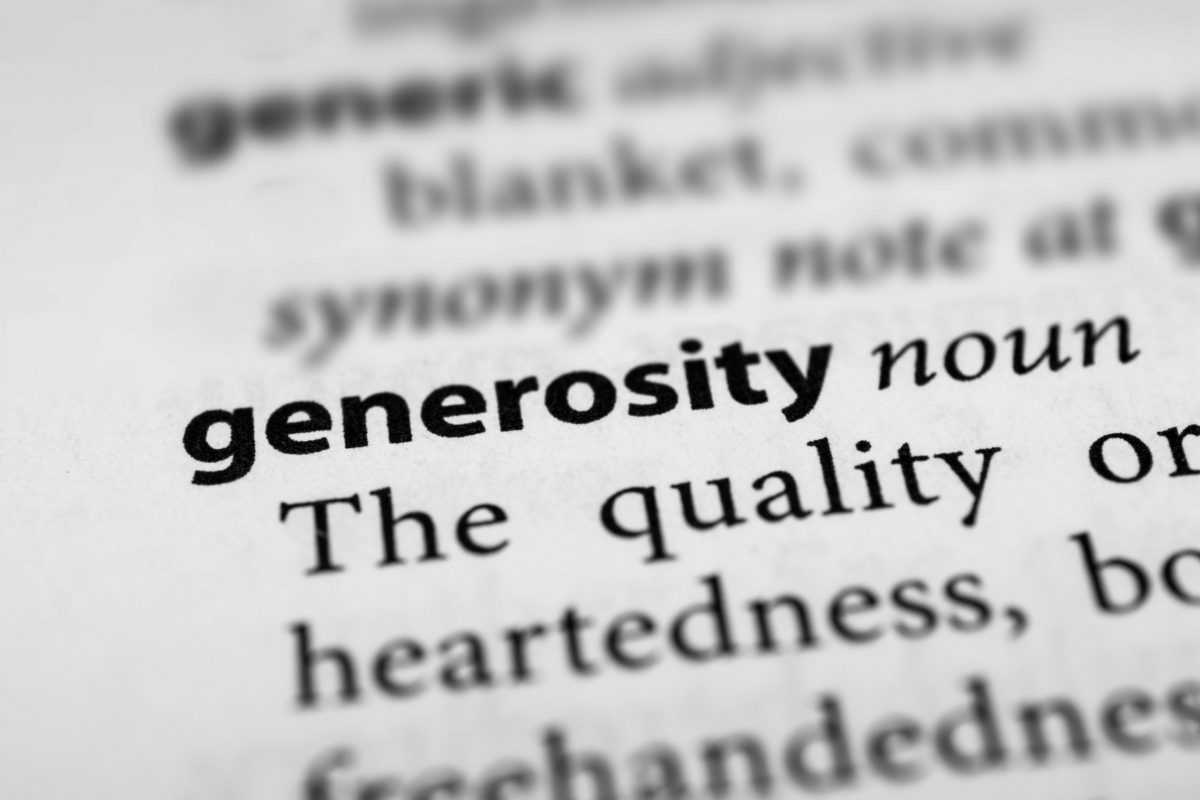
Just One More Fundraising Task....
12.30.2024 | Linda J. Rosenthal, JD

Back in June 2021, Giving USA, a “public service initiative of the Giving USA Foundation,” released the most current of 66 consecutive annual reports on philanthropic giving. Just a few weeks ago, we highlighted that report in our post: Giving USA Report on 2020 (October 12, 2021).
While there was considerable good news about 2020 philanthropy from the research issued by the prestigious Indiana University Lilly Family School of Philanthropy (IUPUI), there was data confirming the continuation of a particularly troublesome trend.
Since 2000, there has been a noticeable decline in the amount of giving by individuals. “Historically, about two-thirds of households made philanthropic gifts; by 2018, that number had dropped to under half, representing tens of millions of families that had stopped giving to charity since 2000.”
Partly based on those findings, and other worrisome current events, the folks at the Giving USA Foundation have for some time been developing a new project – The Generosity Commission. They recently announced its launch. See The Generosity Commission to Explore the “Reimagination” of Philanthropy, Volunteerism and Community in America in Times of National Need, (October 12, 2021) Press Release, the generositycommission.org.
See also: As Charitable Giving Rates Sag, Foundations Back Ambitious New Effort to Ignite Generosity by All Americans (October 12, 2021) Alex Daniels, The Chronicle of Philanthropy. ‘Generosity Commission’ Wants to Drive More Charitable Giving From Middle Class (October 14, 2021) Zoe Strozewski, Newsweek.
The blue-ribbon panel members – seventeen luminaries from philanthropy representing “a variety of types of philanthropic organizations at different stages of their development, in different parts of the country, and across the political spectrum” – will embark on a two-year project that is yet to be fully developed and defined.
While this move is applauded by many in the nonprofit sector, there are skeptics.
And there are critics.
“With the challenges facing giving and volunteering in this generation, leadership from The Giving Institute and Giving USA Foundation began to explore the idea of a commission that could address these concerns. Out of this exploratory effort The Generosity Commission: Igniting America’s Spirit of Generosity was born.”
The purpose of The Generosity Commission is to “explore profound questions that will shape the future of giving, volunteering, and other forms of civic engagement in America.” The aim is to “spark a new national conversation that aims to ignite awareness, desire, and action among our citizens to be generous. The goal is to increase giving and volunteering in its many forms from more people across all backgrounds.”
More particularly, the “initiative looks to ‘reignite generosity’ as financial donations have dropped to an all-time low, with just 50 percent of people contributing to causes, and anger at income inequality is soaring.”
Commission vice chair Jane Wales, who is also vice president for philanthropy and society at the Aspen Institute, explains: “Middle-class households are dropping out of giving”; development that’s “really worrisome for the health of democracy.”
Ms. Wales said that Commission members were selected for a diversity of perspective and opinion. Others of the 17 members include, for instance: Marla Blow, The Skoll Foundation, President and COO; Ann Mei Chang, Candid, CEO, Candid; Kenneth Hodder, The Salvation Army, National Commander; Dr. Eboo Patel, Interfaith Youth Core, Founder and President; Rob Rosen, The Bill & Melinda Gates Foundation, Director Philanthropic Partnerships; and Dr. Cecilia Conrad, MacArthur Foundation, Managing Director and Lever for Change, CEO.
This project is “backed by more than $2 million in grants from top foundations” including the Gates, Kaufman, Mott, Sage, and Templeton foundations, the Lilly Endowment, Fidelity Charitable, fundraising software giant Blackbaud, and others.” It is also actively raising money to support the proposed budget of about $3.8 million for its work.
“To help guide them as they begin to meet over the coming months, commission members will rely on national research it financed on the diversity of donors conducted by the Urban Institute and How We Give Now: A Philanthropic Guide for the Rest of Us, a book based on a year of study by Stanford scholar Lucy Berhholz.” And they will rely as well on “research into civic involvement and giving conducted by Nathan Dietz at the University of Maryland’s Do Good Institute and research on volunteering from the University of Pennsylvania.”
But over the next two years, there will be “fresh research” and “a National Conversation” will be stimulated. “The commission said it planned to ‘build broad national momentum and bipartisan congressional support for positive change to reimagine generosity across America.””
Many details are yet to be worked out. The commission’s work will likely start with “focus groups, surveys, and social-media campaigns to invite the broader public to weigh in on giving. Following that, the commission may seek high-profile efforts to spread the word about its work, like advertising at major sporting events or on popular television shows.”
“We want to capture and celebrate the ways in which giving, volunteering, and civic engagement are being reimagined before our eyes,” said Suzy Antounian, the director of the commission. The panel has “pledged to look both at how philanthropy supports democracy — and at how it has the potential to undermine it.” And it will include the weighty issue of income inequality in its deliberations.
Ms. Antounian says she expects that final recommendations will be made by the fall of 2023.
The Generosity Commission, explains The Chronicle of Philanthropy’s Alex Daniels, is “modeled after the Commission on Private Philanthropy and Public Needs. Formed nearly 50 years ago, the commission for two years gathered landmark research on American giving and offered a set of recommendations to encourage philanthropy that shaped the work of nonprofits for decades.”
This work was critical because, among its accomplishments, it “spurred the creation of the National Committee for Responsive Philanthropy and was instrumental in the creation of Independent Sector, a membership organization of grant makers and charities. It also sparked the creation of research centers dedicated to understanding American giving, perhaps most notably the Lilly Family School of Philanthropy at Indiana University.”
But many of that Commission’s key recommendations were never enacted.
Philanthropy historian Benjamin Soskis has offered thoughts about the new Generosity Commission. While “…more research is needed on American giving,” he believes this particular vehicle “is ill-suited to address the causes of wealth inequality that in his view contribute to the decline in rank-and-file donors. Addressing that decline, he said, will only result in what would surely be a politically contentious debate on wealth inequality and how the rich are taxed.” Mr. Soskis adds: “There are limits to what a commission on charitable giving or generosity can really do,” he said.
Aaron Dorfman, head of the National Committee for Responsive Philanthropy, agrees with Mr. Soskis, saying that “the solution to giving declines can be found in tax changes, particularly to the estate tax, that would prompt more wealthy people to have incentives to give rather than pay more to the federal government. A commission that was likely geared toward reaching a consensus probably doesn’t have an appetite for such a political fight on tax policy.
Still, Mr. Dorfman welcomes this new effort and hopes it further sheds light on “what reliance on rich donors means for charities.”
Also applauding this effort are “…[m]any experts in philanthropy, including Aisha Alexander-Young, president of Give Blck, a nonprofit that works to increase giving to organizations founded by Black people, welcomed the work of the commission.”
But Jackie Bouvier Copeland, founder of Black Philanthropy Month, has concerns: “…If no action is taken, the work of the commission will be viewed as merely a public-relations campaign to elevate the standing of philanthropy and rich donors in the minds of the American public, without doing anything to steer more money to help society.” She adds: “This commission will do more harm than good if it listens and does nothing.”
Not to forget the full-on critical voices, don’t miss Why the Generosity Commission is a waste of time (October 15, 2021) Allison H. Carney, Ahcarney.com. “The Generosity Commission is just the latest splashy, out-of-touch thinking to come out of Big Philanthropy.”
She continues: “The commission’s purpose is simple: to investigate why giving has declined and to spur more generosity among middle- and low-income individuals. *** If you’re anything like me, you just blinked a few times at your computer screen, furrowed your brow, and launched yourself out of the closest window….Giving is declining because Americans are poorer than they’ve ever been.”
Ms. Carney’s article is decidedly not a waste of time, confirms notable philanthropy commentator, Vu Le, in Democracy is Dying. Philanthropy Needs to Stop Its Toxic Intellectualizing (October 18, 2021) Nonprofit AF Blog. “What she says” is followed by what Mr. Le warns readers is an unusually no-holds-barred post. Fasten your seatbelts.
